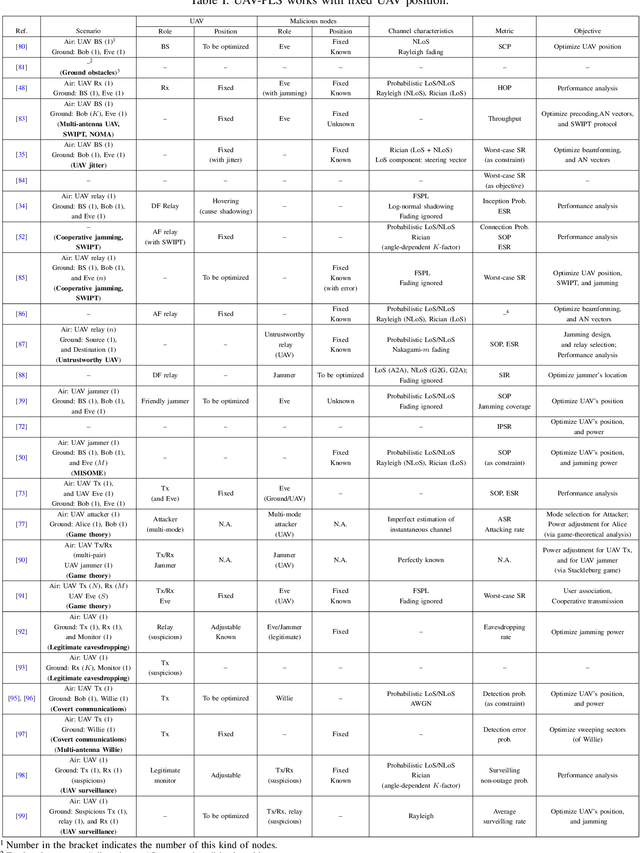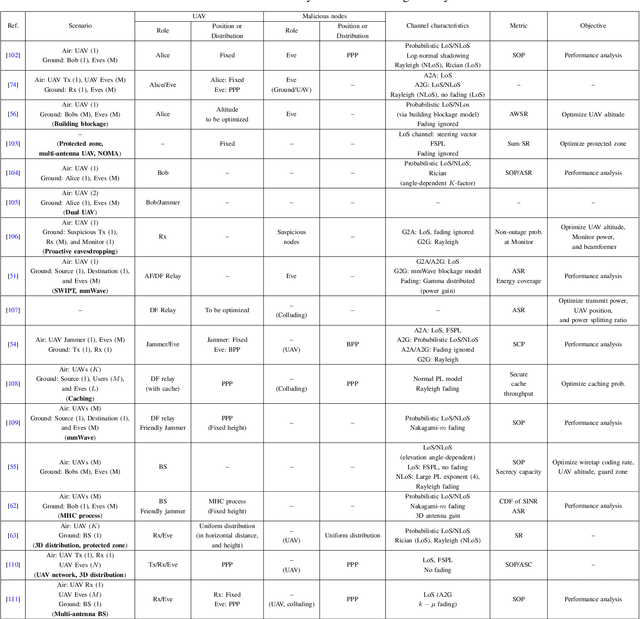Ruifeng Gao
Maritime Communication in Evaporation Duct Environment with Ship Trajectory Optimization
Oct 08, 2025Abstract:In maritime wireless networks, the evaporation duct effect has been known as a preferable condition for long-range transmissions. However, how to effectively utilize the duct effect for efficient communication design is still open for investigation. In this paper, we consider a typical scenario of ship-to-shore data transmission, where a ship collects data from multiple oceanographic buoys, sails from one to another, and transmits the collected data back to a terrestrial base station during its voyage. A novel framework, which exploits priori information of the channel gain map in the presence of evaporation duct, is proposed to minimize the data transmission time and the sailing time by optimizing the ship's trajectory. To this end, a multi-objective optimization problem is formulated and is further solved by a dynamic population PSO-integrated NSGA-II algorithm. Through simulations, it is demonstrated that, compared to the benchmark scheme which ignores useful information of the evaporation duct, the proposed scheme can effectively reduce both the data transmission time and the sailing time.
Directional Measurements and Analysis for FR3 Low-Altitude Channels in a Campus Environment
Jul 16, 2025Abstract:In this paper, we present detailed low-altitude channel measurements at the FR3 band in an outdoor campus environment. Using a time-domain channel sounder system, we conduct two types of measurements: path loss measurements by moving the transmitter (Tx) at one-meter intervals along a 26-point rooftop path, and directional power angular spectrum measurements through antenna scanning at half-power beam width intervals. The path loss analysis across different Rx shows that the close-in model outperforms conventional 3GPP models and height-corrected variants, with path loss exponents close to free space values indicating line-of-sight dominance. The power angular spectrum measurements show that propagation behavior varies significantly with environmental conditions. Closer Rx exhibit stronger sensitivity to ground reflections during downward Tx tilting, while obstructed links display uniform angular characteristics due to dominant scattering effects, and corridor environments produce asymmetric power distributions. These results indicate that low-altitude propagation is characterized by complex interactions between Tx height and ground scattering mechanisms, providing fundamental insights for channel modeling in emerging mid-band communication systems.
Millimeter-Wave Energy-Efficient Hybrid Beamforming Architecture and Algorithm
Jan 03, 2025Abstract:This paper studies energy-efficient hybrid beamforming architectures and its algorithm design in millimeter-wave communication systems, aiming to address the challenges faced by existing hybrid beamforming due to low hardware flexibility and high power consumption. To solve the problems of existing hybrid beamforming, a novel energy-efficient hybrid beamforming architecture is proposed, where radio-frequency (RF) switch networks are introduced at the front and rear ends of the phase shifter network, enabling dynamic connections between the RF chains and the phase shifter array as well as the antenna array. The system model of the proposed architecture is established, including digital precoding and analog precoding processes, and the practical hardware limitations such as quantization errors of the digital-to-analog converter (DAC) and phase shifter resolution. In order to maximize the energy efficiency, this paper derives an energy efficiency model including spectral efficiency and system power consumption, and a hybrid precoding algorithm is proposed based on block coordinate descent to iteratively optimize the digital precoding matrix, analog precoding matrix, and DAC resolution. Simulation results under the NYUSIM-generated millimeter-wave channels show that the proposed hybrid beamforming architecture and precoding algorithm have higher energy efficiency than existing representative architectures and precoding algorithms under complete and partial channel state information, while the loss of spectral efficiency compared to fully connected architecture is less than 20%
* 21 pages, in Chinese language, 8 figures, published to Mobile Communications
Physical Layer Security for UAV Communications in 5G and Beyond Networks
May 24, 2021



Abstract:Due to its high mobility and flexible deployment, unmanned aerial vehicle (UAV) is drawing unprecedented interest in both military and civil applications to enable agile wireless communications and provide ubiquitous connectivity. Mainly operating in an open environment, UAV communications can benefit from dominant line-of-sight links; however, it on the other hand renders the UAVs more vulnerable to malicious eavesdropping or jamming attacks. Recently, physical layer security (PLS), which exploits the inherent randomness of the wireless channels for secure communications, has been introduced to UAV systems as an important complement to the conventional cryptography-based approaches. In this paper, a comprehensive survey on the current achievements of the UAV-aided wireless communications is conducted from the PLS perspective. We first introduce the basic concepts of UAV communications including the typical static/mobile deployment scenarios, the unique characteristics of air-to-ground channels, as well as various roles that a UAV may act when PLS is concerned. Then, we introduce the widely used secrecy performance metrics and start by reviewing the secrecy performance analysis and enhancing techniques for statically deployed UAV systems, and extend the discussion to a more general scenario where the UAVs' mobility is further exploited. For both cases, respectively, we summarize the commonly adopted methodologies in the corresponding analysis and design, then describe important works in the literature in detail. Finally, potential research directions and challenges are discussed to provide an outlook for future works in the area of UAV-PLS in 5G and beyond networks.
 Add to Chrome
Add to Chrome Add to Firefox
Add to Firefox Add to Edge
Add to Edge